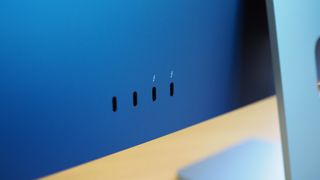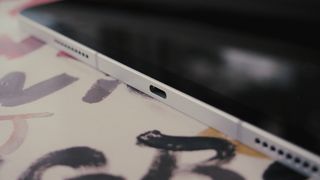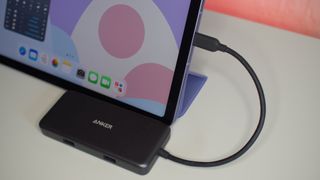What's the difference between USB-C and Thunderbolt?
Thunderbolt and USB-C can often get confused; here is what you need to know.

What's the difference between USB-C and Thunderbolt?
Best answer: USB-C and Thunderbolt may use the same port, but they are by no means the same connector. There are some key differences that prevent most Thunderbolt 3 products from connecting to USB-C ports.
The world is changing towards a USB-C future, and Apple is finally getting on board. With the included USB-C port on the new iPad (2022) and strong indications that the iPhone will finally drop the lightning port in favor of the "universal" connector, it would be prudent to understand the ports we see on Apple devices today and likely going forward.
While Apple seems to be using USB-C ports on most of its devices these days, its MacBook Pro (M2, 2022), iPad Pro (2022), and some other devices also have a Thunderbolt port. What exactly is the difference? Well, it can get a bit complicated, so let's break it down for you.
Two protocols, one port

USB-C and Thunderbolt 3 both utilize the same reversible port, which can lead to a lot of confusion surrounding the two protocols. While a USB-C port and Thunderbolt 3 port look the same, Thunderbolt 3 has some extra hardware compared to the more widely-adopted USB-C.
It's important to know, too, that your USB-C accessories and cables will work with a Thunderbolt 3 port. All Thunderbolt 3 ports are also USB-C ports. However, the same cannot be said for the other way around; not all USB-C ports are also Thunderbolt 3 ports.
A story of PCIe

Thunderbolt was developed by Intel and offers high-bandwidth data transfers between devices, with maximum transfer rates of 40Gbps (or 5GB/s) available. Importantly, it's also built on PCI Express (PCIe) and DisplayPort, which is why Thunderbolt 3 cables and accessories aren't compatible with USB-C-only ports (for the most part; more on that in a bit).
Thunderbolt 3 uses PCIe, which offers more data throughput.
PCIe offers a lot of data throughput — it uses multiple lanes to quickly move large amounts of data. This is what gives Thunderbolt 3 its speed, but it means that if you want to use a Thunderbolt accessory, you need to plug it into a Thunderbolt 3 port.
Because USB-C doesn't use PCIe. USB-C is merely the latest generation of the USB standard, something that's been present in everything from computers to cameras to phones for a while now. So when you try to plug in a Thunderbolt 3 accessory to a USB-C port, it just won't work because there's no PCIe controller in the USB-C port.
While you can't use most Thunderbolt 3 devices with a USB-C port, the same isn't true the other way around. You can plug a USB-C device and cable into a Thunderbolt 3 port whenever possible because Thunderbolt 3 fully supports USB-C.
Master your iPhone in minutes
iMore offers spot-on advice and guidance from our team of experts, with decades of Apple device experience to lean on. Learn more with iMore!
So a USB-C hard drive you have can be used in any of the Thunderbolt ports on your iMac (2021) or in the USB-C port on iPad Air 5.
Daisy chain away
Another advantage that Thunderbolt has over USB-C is daisy chaining. You can connect up to six peripherals to a single host Thunderbolt 3 port by chaining them together serially.
For instance, if you have a bank of Thunderbolt 3 external hard drives, you can connect one to your Thunderbolt 3-equipped Mac, then connect a second hard drive to the first drive, a third to the second, and so on. All of those drives (again, up to six) will now be available for use by your Mac.
While devices like USB-C monitors can act as hubs for other devices, you can't yet connect device to device to device serially as you can with Thunderbolt 3.
Remember the port matters
For some people, what exact ports you have on your device might not matter much; as long as it uses the same connector, you're good to go; however, some workflows and setups need Thunderbolt or USB-C that can handle certain data transfer speeds.
Joseph Keller is the former Editor in Chief of iMore. An Apple user for almost 20 years, he spends his time learning the ins and outs of iOS and macOS, always finding ways of getting the most out of his iPhone, iPad, Apple Watch, and Mac.
Most Popular




